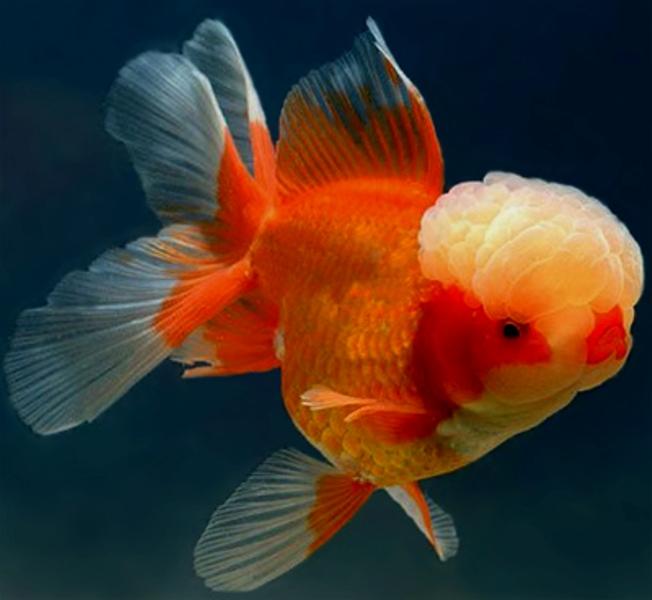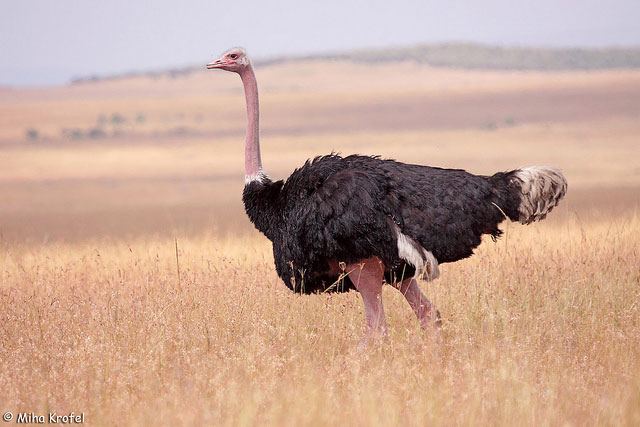Interesting facts about animals
Goldfish are not as stupid as we thought, camel humps do not contain water, bats are not blind . The following are interesting questions about animals around us.
Misconceptions about animals
Goldfish have memories that last only 3 seconds
This misconception stems from the image of a small goldfish swimming around a vase, when swimming one round, they forget what they have done and so keep swimming forever.
However this is completely absurd. Experiments at the University of Plymouth, USA, show that goldfish can be trained to collect food at certain times.

Ostrich buries its head in the sand to hide its enemies
Since Roman times, people still think that momentum is so stupid that they deal with danger by hiding their heads in the sand. This image also becomes a metaphor for those who avoid reality, like a child covering his ears and shouting: " I don't hear anything ".

However, the fact is that ostriches are much more cunning, shown in that they are birds that can run at 64 km / h.
So where does that mistake come from?
The skin swallowes sand and gravel to help them crush food in the stomach. That means they have to bury their heads in the sand to collect gravel.
Camel hump is full of water
All thought that camels store water in the hump to survive in the desert. But that's not true. In fact, all-fat camels . Their main source of water is blood, where nearly 150 liters of drinking water are stored at a time.

Unlike other mammals - with spherical blood cells, camel blood cells are oval in shape, so they can float easily through the vessel wall even if they are dehydrated, and so they can Absorb a lot of water without breaking.
Camels also protect themselves from harsh desert conditions by sweating much less than other animals, closing their nostrils so that water does not evaporate, urinating very little and feces. then dry, reflecting the sun through the fur.
The fat-bearing hump is also to create water every time the fat is converted into energy.
Cows lie down when it's about to rain
People still believe that when a herd of cows lies on the grass, it will surely rain. But this has absolutely no basis. Cows often lie down when they chew. If they live in England where rain often occurs, there will definitely be times when their posture coincides with the rain.

Bats are blind
In fact, bats have very small eyes, and can work effectively at night or in dark caves, where there is no light. However, that doesn't mean they don't see during the day.

They use vision to travel long distances during the day, some also detect ultraviolet light that humans cannot see.
The only problem is that their vision is not as sensitive as other senses. With oversized ears, they have very sensitive hearing. Bats can emit shrill sounds and use sound waves to identify prey, find the victim's location with great accuracy.
Sharks must move continuously or they will die
This is completely wrong. Not all sharks always move. In fact, sharks really need water to constantly move through their gills to breathe. But many species can achieve this by lying on the seabed and carrying around to create a pumping reaction.
However, some other species, such as white sharks, do not have gills, cannot pump water, so they must move continuously.

Piranhas are extremely dangerous to humans
If you've watched a lot of movies, you will see ferocious piranhas that can come in and tear up a human within 30 seconds.
But that is completely absurd.
Piranhas really have small, sharp teeth, and can cause you to be scratched. And it is true that they swim in large flocks but only defend themselves against predators like dolphins. Piranhas also eat small fish, but they never attack you.

A five year old dog of 7 years
Make a small calculation. Currently, the average life expectancy of people is 67.5 years. The average life expectancy of dogs is 12.8 years.
So a dog's year is almost 5 years old. But not every human being, nor does every dog have the same life expectancy.
In general, the smaller the dogs, the longer they live. An Irish wolf hound can take 6 years, while a poodle or a mink dog can live up to 14 years.

Similarly, an Andorra citizen can reach life expectancy of 83, but a person living in Swaziland only lasts about 39 years. So one year of wolfhounds equals 14 years of Andorra, while a year of weasel dogs is only 2.5 years of the Swazi.
In addition, there is another biological element. A dog grows completely when he is 1 year old, and he is only fully mature when he is 21 years old. Therefore, the first year of the dog is equivalent to 2 decades of humans.
- 15 interesting facts about animals are not included in textbooks
- A series of fun facts that answer your own eternal questions!
- Interesting facts about horses
- 10 interesting facts about world history
- 19 extremely interesting facts you should not ignore
- Anecdotes should not believe other animals
- Interesting facts in Germany
- Discover interesting scientific facts
- 10 extremely interesting facts about clothes
- Going from one surprise to the other is different from the interesting things about all things
- 19 interesting facts about babies make adults suddenly fall back
- Top interesting facts about the world over 100 years ago
 Animal 'suffering' after hibernation
Animal 'suffering' after hibernation Why do goats climb well?
Why do goats climb well? Scientists were surprised to see chimpanzees eating turtles
Scientists were surprised to see chimpanzees eating turtles Giant catfish died deadly due to drought in Thailand
Giant catfish died deadly due to drought in Thailand